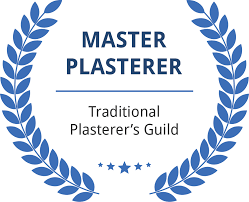The Role of Lime Mortar in Restoring and Preserving Structures
- Owen

- Sep 17
- 4 min read
Restoring and preserving historic buildings requires materials that are both durable and sympathetic to the original construction. Lime mortar has been used for centuries in masonry work and remains a vital component in conservation projects today. Its unique properties make it ideal for maintaining the structural integrity and aesthetic of older buildings. This article explores the role of lime mortar in restoration, its benefits, potential drawbacks, and practical advice for those considering its use.
Understanding Lime Mortar and Its Importance in Restoration
Lime mortar is a traditional building material made from lime, sand, and water. Unlike modern cement-based mortars, lime mortar is breathable and flexible, allowing moisture to evaporate from walls and accommodating slight movements in the structure without cracking. This makes it especially suitable for historic buildings constructed with softer bricks or stones.
The use of lime mortar in restoration helps to:
Preserve original materials by reducing damage caused by trapped moisture.
Maintain the building’s breathability, preventing damp issues.
Allow for easier repairs since lime mortar is softer and can be removed without harming the masonry.
Match the appearance of historic mortar, ensuring visual consistency.
For example, in the restoration of a 19th-century stone cottage, lime mortar was chosen to replace deteriorated cement mortar. This choice prevented further stone erosion and maintained the building’s character.

Benefits of Using Lime Mortar in Restoration Projects
Lime mortar offers several advantages that make it the preferred choice for many restoration specialists:
Breathability and Moisture Management
Lime mortar allows water vapour to pass through the walls, reducing the risk of trapped moisture that can cause decay. This is crucial in older buildings where dampness is a common problem.
Flexibility and Durability
Unlike rigid cement mortars, lime mortar can flex slightly with the building’s natural movements. This flexibility reduces cracking and prolongs the life of the masonry.
Compatibility with Historic Materials
Lime mortar is softer than cement, which means it won’t damage softer bricks or stones during expansion or contraction. This compatibility helps preserve the original fabric of the building.
Environmental Benefits
Lime mortar production has a lower carbon footprint compared to cement. It also absorbs carbon dioxide as it cures, making it a more sustainable choice.
Ease of Repair and Maintenance
Repairs using lime mortar are simpler and less invasive. Damaged mortar can be removed and replaced without harming the surrounding masonry.
If you are looking for expert help, searching for lime mortar specialists near me can connect you with professionals experienced in traditional lime mortar techniques.

What are the disadvantages of lime mortar?
While lime mortar has many benefits, it also has some limitations that should be considered:
Longer Setting Time
Lime mortar takes longer to set and cure compared to cement. This can extend project timelines, especially in damp or cold conditions.
Lower Initial Strength
Lime mortar is not as strong as cement initially, which means it may not be suitable for structural elements requiring high compressive strength.
Sensitivity to Weather
During application and curing, lime mortar is sensitive to frost and heavy rain. Proper weather conditions are necessary to ensure a good finish.
Requires Skilled Application
Applying lime mortar correctly requires experience and knowledge. Incorrect mixing or application can lead to poor performance and premature failure.
Despite these drawbacks, the benefits of lime mortar in preserving historic buildings often outweigh the challenges, especially when applied by skilled professionals.
Practical Tips for Using Lime Mortar in Restoration
To maximise the effectiveness of lime mortar in restoration projects, consider the following practical advice:
Choose the Right Type of Lime
There are different types of lime, such as hydraulic and non-hydraulic lime. Non-hydraulic lime sets by carbonation and is more breathable, while hydraulic lime sets faster and is stronger. Select the type based on the building’s needs.
Match the Original Mortar
Analyse the original mortar composition to replicate its colour, texture, and strength. This ensures visual harmony and material compatibility.
Prepare the Surface Properly
Remove old cement mortars carefully without damaging the masonry. Clean the joints to ensure good adhesion.
Mix Correctly
Use clean sand and water, and follow recommended ratios. Avoid adding cement or other additives unless specified.
Apply in Suitable Weather
Avoid extreme temperatures and wet conditions during application and curing.
Allow Adequate Curing Time
Lime mortar cures slowly. Protect the work from drying out too quickly or from frost.
Regular Maintenance
Inspect and repair mortar joints periodically to prevent water ingress and structural damage.
By following these steps, you can ensure that lime mortar performs well and contributes to the long-term preservation of the building.

Preserving Heritage with Lime Mortar: A Sustainable Choice
Using lime mortar in restoration is not just about maintaining aesthetics; it is a commitment to sustainability and heritage preservation. Lime mortar’s ability to work with traditional materials and its environmental benefits make it a responsible choice for conserving historic structures.
Moreover, lime mortar encourages the use of traditional craftsmanship, supporting skilled trades and cultural heritage. When combined with modern conservation techniques, it helps extend the life of buildings while respecting their original character.
For anyone involved in restoration, consulting with experienced lime mortar specialists near me can provide valuable insights and ensure the best outcomes.
In summary, lime mortar plays a crucial role in restoring and preserving structures by offering breathability, flexibility, and compatibility with historic materials. While it requires careful application and patience, its benefits for heritage conservation and sustainability are unmatched. Choosing lime mortar is a step towards protecting our architectural legacy for future generations.
For Help or advice on your next project, get in-touch with the experts at Lime Plastering Wales Telephone: 01873 877556 Email: info@limeplasteringwales.co.uk






Comments